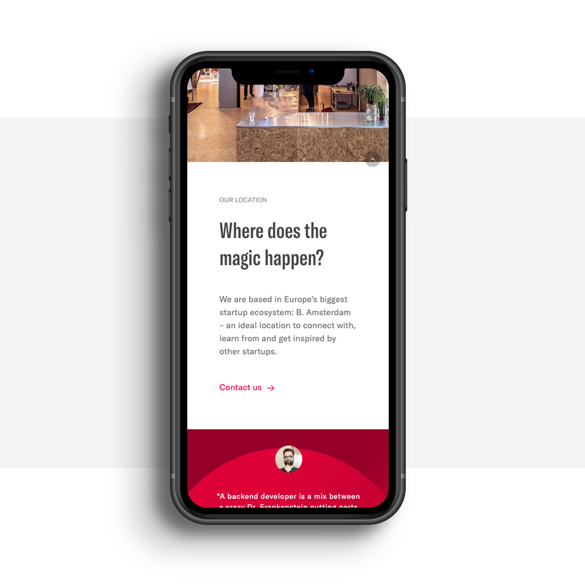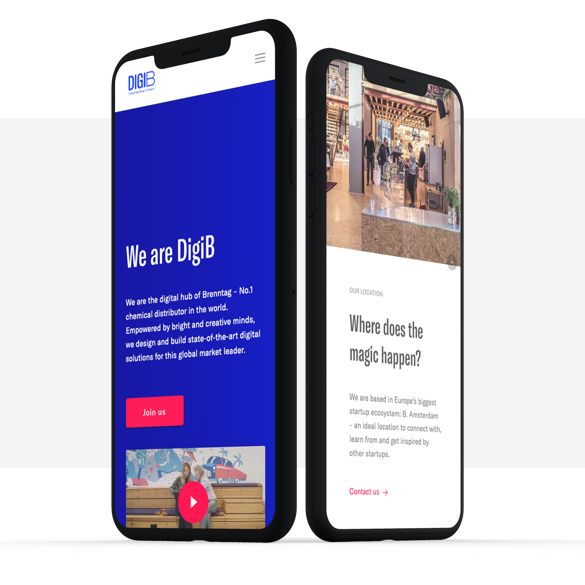Digital transformation is an ongoing process, a long term vision for the business’s future. With any project that stretches across months and years, staying aligned is the number one concern; effective work begins with the whole business being on the same page. By staying aligned, each department continues to support the greater goal, sticking to the script rather than improvising a new solution that pops into mind. For this reason, building a digital roadmap is a necessary step in establishing the digital future of your business.
Aligning the business is the first step
This isn’t to say that the digital roadmap is set in stone, impossible to edit. Technology changes, faster and faster, meaning a multi-year plan cannot fully anticipate the exact developments that will be available in one, two and five years’ time. Rather, a digital roadmap is there as a North Star, a reference point that everyone across the business can refer to and follow.
Every organisation is unique. Overall goals may be comparable for organisations within a sector, but in terms of structure, routine and process, there are usually major differences. Finding out how your organisation “works” and why it has been successful so far starts with asking a lot of questions. Essentially, you’ll want to understand the landscape of your business strategy to translate business goals into a digital roadmap.
Bring together department heads across the business and work out the key goals that the business would like to achieve over the next five years. By getting the opinion of each function in the business, the company can focus on business-wide goals such as lowering overhead costs, and department-specific actions such as improving logistical tracking across the supply chain.
When putting together a list of key aims, consider how each aim can be measured and quantified. What will be the KPIs that prove the action taken was a success? For finance-focused goals, this is simple, as easy as following changes in the balance sheet. In other areas, it can be more complicated, particularly if the goal is general. For example, if the business is aiming to increase sales, does success mean a higher quantity of products are sold, or more products of a higher value? The solution is to be specific. Begin with the general goals, to listen to and understand every view from the business leaders. By discussing a way of measuring each goal, the business will be forced to be clear about what they want to achieve.
When the company has agreed on the goals for the business, think of the timeframe that these goals need to be completed in. Some will take more time, some will be possible within a few months. Certain goals will only be possible when others have been completed, others will be the starting point for future ideas, the innovation that opens the door to new possibilities.
It’s okay not to have all the answers now. You may know that you want to ‘improve data capture across the business’ but might not know what digital solution can achieve this. So long as it’s on the roadmap, it can be considered and solved when you reach the stage of planning your digital ecosystem architecture.
Start with an open mind
When planning the key goals that the business wants to achieve over the coming months and years, it’s important to keep an open mind. Going into this process with a particular solution or system in mind will colour the approach; an unconscious bias that could lead the business away from a more appropriate solution. Just because you used, and liked, a certain platform in a previous role, doesn’t mean it’s right for the future of the business.
As an example, a manufacturer could implement blockchain technology to track each ordered item through the supply chain, as it has concerns over missing inventory. Blockchain may be useful, but it may not address the real problem of missing inventory in orders. RFID tagging could be a much more important focus, but budget is pushed to the less applicable blockchain implementation. It also potentially misses out on certain needs that should be addressed; focusing on blockchain rather than addressing the problem could result in the business missing the importance of putting in an automated workflow that updates each party on each stage of the supply chain journey.
To help with this initial stage, focus on these three angles when assessing your organisation’s digital needs: people, processes, and the current tech stack.
1. People
Your internal digital capabilities and expertise determine the success with which your organisation utilises its technology. Training, tools and empowerment are needed to increase your digital punching power.
2. Processes
According to Conway’s Law, systems follow the way processes are organised. That’s why an HR department typically works with an HR system and customer services work with a specific customer service system. By mapping your internal processes and governance, you get a clear view of how technology is being used within your organisation. The long-term success of a tech implementation depends on how well the tech fits in with your organisation and processes.
3. Platform
Your current technology stack consists of your digital infrastructure and tools. Are all applications within the organisation based on Java technology? Or oppositely, based on .Net? Certain platforms such as content management systems, require you to consider the same technology. If using cloud services is prevalent throughout the company, a cloud deployment of your technology platforms will seem like a preferred choice. Mapping your technology completely may also bring interesting findings, such as shadow IT or different departments using the same cloud services under different accounts.
Being tech agnostic from the get-go is preferable, as it will help you to survey and review each potential technology provider and implementation partner with an open mind, marking each on how their strengths and weaknesses match up with the needs of the business. Analysts like Forrester and Gartner provide regular reports across various technologies, tracking developments in the market and listing pros and cons.
Collaboration at every stage
Building a digital roadmap begins with bringing stakeholders across the business together to understand their needs. At no point should this collaborative input fall away. This also applies to working with external partners and platform providers, collaboration is a constant and the key to making your digital transformation a success.
Each department needs to buy into the new technology that is being built out, and the new processes and workflows it will introduce. Buy-in is much more likely if the relevant teams are involved in the decision-making process, can see how the changes will roll out over time, and feel like their input is valued and applied.
The ongoing input also leads to a technology stack that is far more likely to match up with what the teams need. An initial briefing is a starting point; ongoing consultation and testing gives the company the ability to fine-tune the new capabilities.
When working with external partners, chemistry can make a world of difference to a project. The digital roadmap aims to transform how a business operates over an extended period – a big task. The right partner to collaborate with must understand the business challenges, be able to manage a project of this size, and show a level of care and commitment to making the project successful. Finding this balance is tough, but demonstrates the importance of partnering with providers who fully understand your overarching business goals, for the long term.
Creating an agile roadmap
Innovation is constant. The pace of change means that an agile approach to planning is an absolute necessity. Rather than spending years perfecting a tech stack that is already obsolete by the time it is released, businesses should look to start small and scale when the test case proves successful.
For example, in the B2B commerce sector, Brenntag established DigiB, a digital innovation hub that guides the ongoing implementation of new technology across its chemical distribution network. DigiB’s guiding principle is to get projects live and learn from what works. This crawl, walk, run approach means the business can keep key revenue streams live while always working on the next change.


As mentioned earlier, the roadmap is a guide, not a fixed set of rules. A good roadmap takes into account new innovations on the horizon, with a view to being an early mover when an industry-altering technology is released. Working with technology partners as the roadmap is built can give an insight on upcoming scheduled releases that the business must be aware of. Again, test and scale, think of what area of the business can use the innovation or new feature and act as a proof of concept.
Ease of use and accessibility
The best tech stack on the market is of no use if the team does not know how to make use of its capabilities. When charting the progressive implementation of digital solutions, plan the training that needs to take place and how it can be supported through always-available information.
Some features will be quickly adopted as they resemble applications everyone is used to, such as digital communications tools. Other changes will take longer, particularly advanced software and relatively new developments like machine learning. The roadmap should take into account the time it takes to upskill, as should the data collection system put in place to track the success of each new feature.
New technology can lead to new internal processes. Ensuring these are reviewed and adopted are just as important as driving usage of the new tech. Again, this comes down to training, knowledge sharing and driving an understanding of what’s changing and why.
Continuous improvement
Digital transformation is not as simple as flicking a switch. It’s a process. Implementing a digital roadmap could mean a change in workplace culture, instilling the idea of continuous improvement. These incremental updates add up, and the business will see the effect as each step of the roadmap is completed.
Celebrate the success, but never lose sight of the ongoing goal of digital transformation. Always be building, always be scaling, always be improving.
More Insights?
View all InsightsQuestions?
Head of Marketing, EMEA





